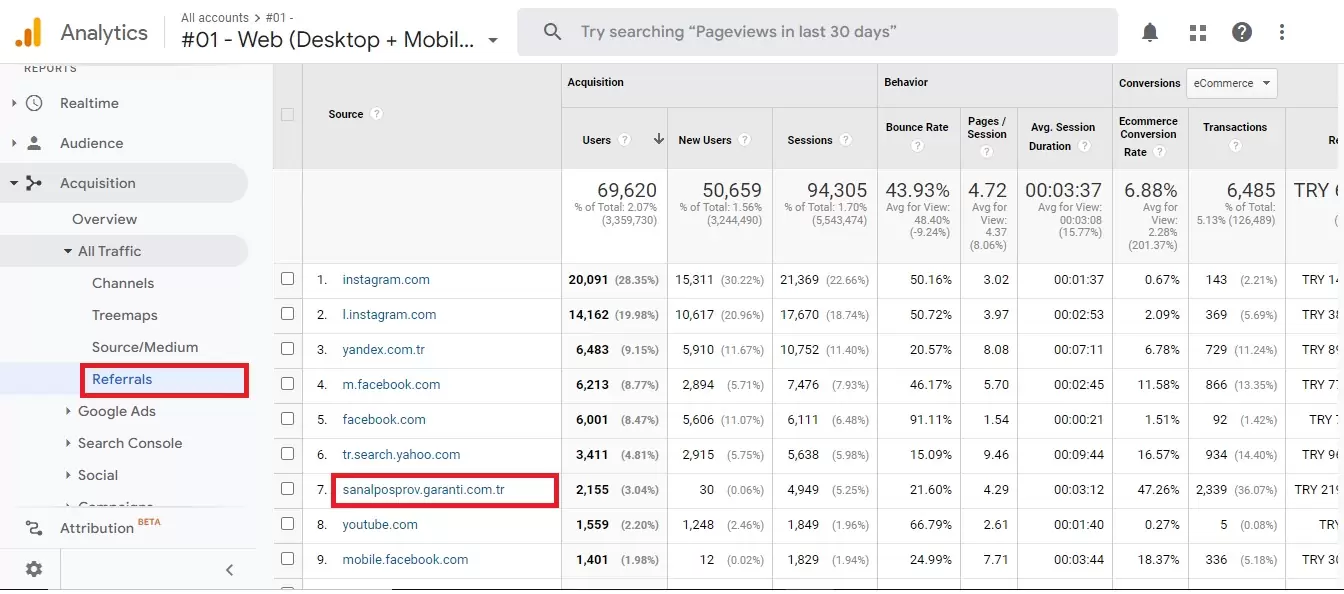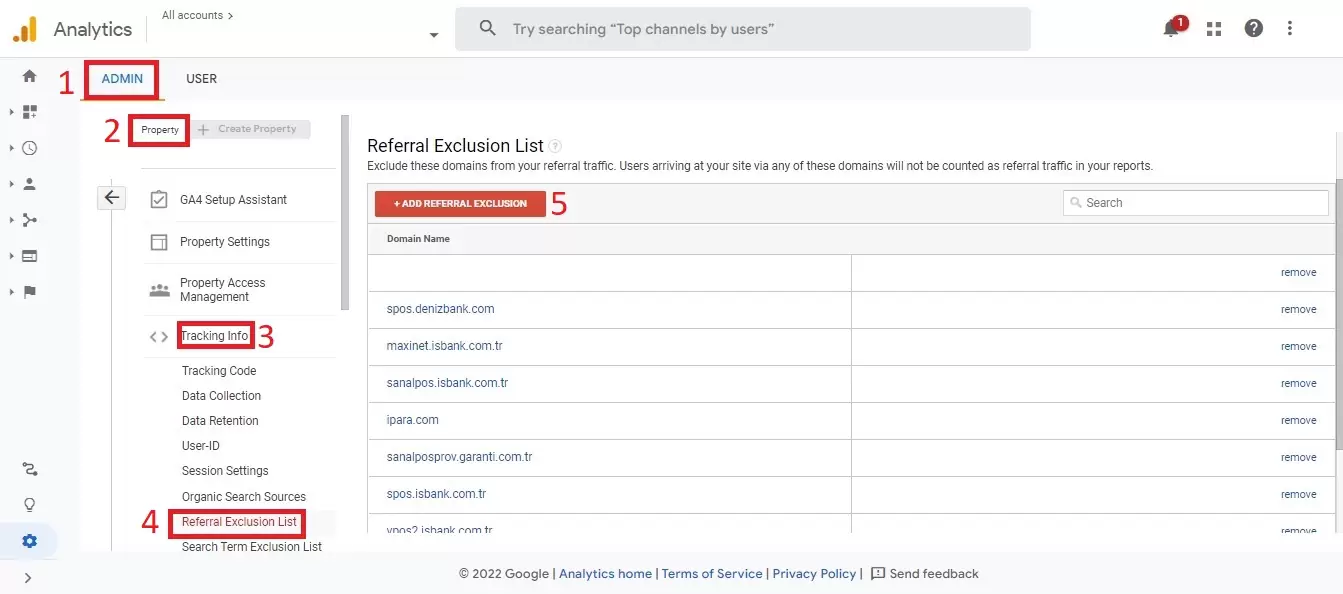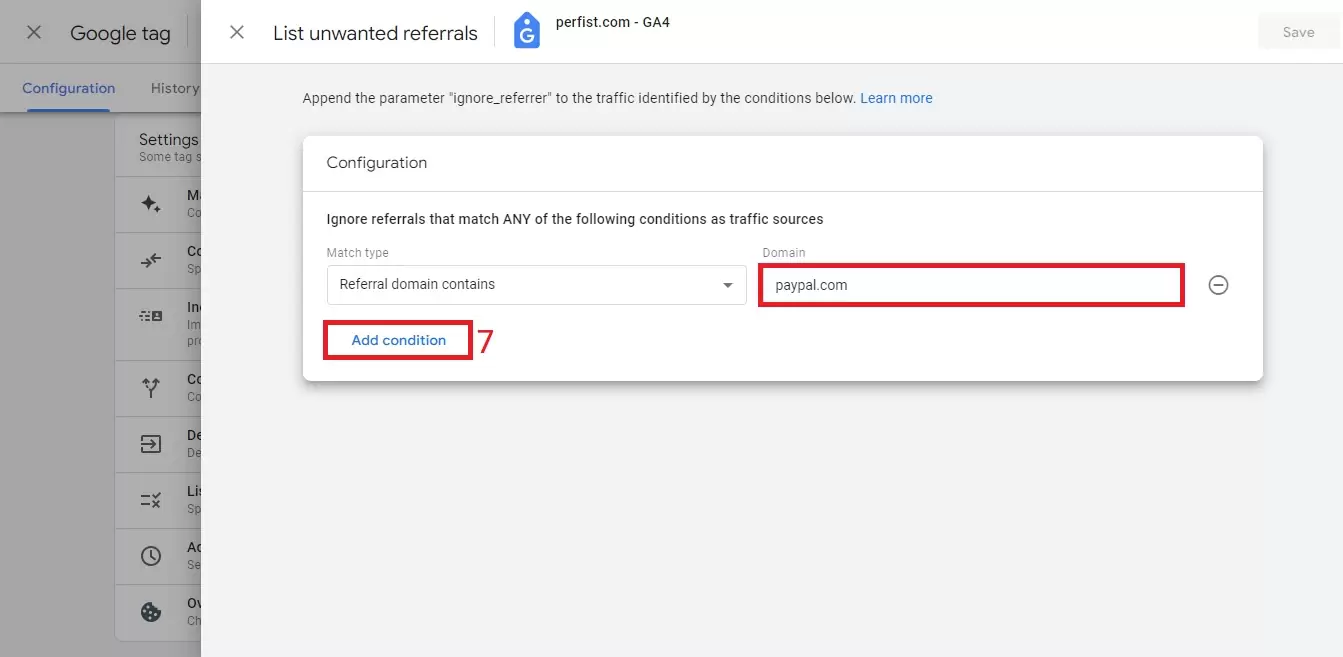
05.10.2022
Google Analytics makes sure to inform you whether your users come from search engines, directly, social media, referrals etc. This is important data and therefore, one of the frequently visited reports in Analytics is the Source/Medium report.
The referral traffic source in Google Analytics can be explained as follows: It includes web sites that “referral” users to your site by clicking a link. This report excludes organic search and ad visits in most cases.
However, there will be some reconfigurations you need to do have correct reporting in Google Analytics.
Below you will see a sample Acquisition -> All Traffic -> Referrals report, in this report we see a very common scenario: sanalposprov.garanti has been registered as a source for some of the visits.

Google Analytics starts a new session when a customer comes to the website from a different traffic source than before (if not a directly visit), even if the previous session has not expired. The payment process is mostly done via a third party system which does all the anti fraud checks and ensures that the payment is legitimate. When the customer payment successfully, your customer is forward to “thanks”, “order received successfully”, etc. pages. In this case, the customer is considered start a session again.
Shortly referrer information can be seen in the Source/Medium reports: PayPal, İyzico, Garanti, İşbank, Denizbank, Shopify vb.
This data prevents you from seeing the original traffic source that caused the transaction to occur. As a referrer, the payment gateway doesn’t tell you anything you don’t know, and in that sense it is data pollution to be avoided.
If you are using Universal Analytics, you need use the Referral Exclusion List feature.
It’s accessible via under Admin(1) -> (Property)(2) Tracking Info(3) -> Referral Exclusion List(4). In the example below you can see a list with some third-party gateways added. Also, how to add paypal.com to this list, you can see below.

To add any new third-party payment gateway to the list, click the + ADD REFERRAL EXCLUSOIN(5) button.

Then enter paypal.com in the Domain name box and click the Create(6) button. PayPal is now added to the Google Analytics Referral Exclusion List.
Google Analytics normally takes 24-48 hours to apply an referral exclusion.
If you are using Google Analytics 4, you need use the List unwanted referrals feature. Below, you can see how to do this through the Perfist Google Analytics account as an example.
Click Admin(1) -> (Property)(2) Data Streams(3) -> Your Data Streams(4).

Next, scroll down and click Configure tag settings(5):

Then click List unwanted referrals(6):

Finally, enter paypal.com in the Domain name box and click the Add condition(7) button. PayPal is now added to the List unwanted referrals.

Now with third-party gateways redirects added to the List unwanted referrals, GA reports will provide you with original traffic data and you will track the original sources.
Perfist Blog
Similar Articles

Regularly monitoring the destination URLs of your Google Ads campaigns is one of the most effective ways to protect your ad budget. Broken or misdirected pages waste paid clicks, lower your Quality Score, and hurt your conversion rates. In this article we’ll walk you step-by-step through building an automation system that exports Google Ads destination […]
Read More
Senior Level Performance Marketing
In this guide, we will explain what a session is in Google Analytics 4 (GA4), why session duration matters, which session metrics are available, and how to configure these settings. What is a Session in GA4? A session represents the group of interactions a user has with your website or mobile app within a given […]
Read More
Beginner Level Web/App Analytics
What is GEO (Generative Engine Optimization)? GEO is a new generation optimization method that ensures content stands out in AI-supported search systems. It aims to produce content that can provide quick and clear answers to user questions. In addition to traditional SEO, a simple and understandable language that appeals to artificial intelligence is used. Why […]
Read More
Mid Level SEO
GEO is an optimization method developed to ensure that content is better understood and recommended by AI-powered search engines. Previously, when writing content, the goal was solely to rank high on Google. Now, however, AI systems read these contents and present summaries to users. This is exactly where GEO steps in. It ensures that content […]
Read More
Mid Level Content Marketing